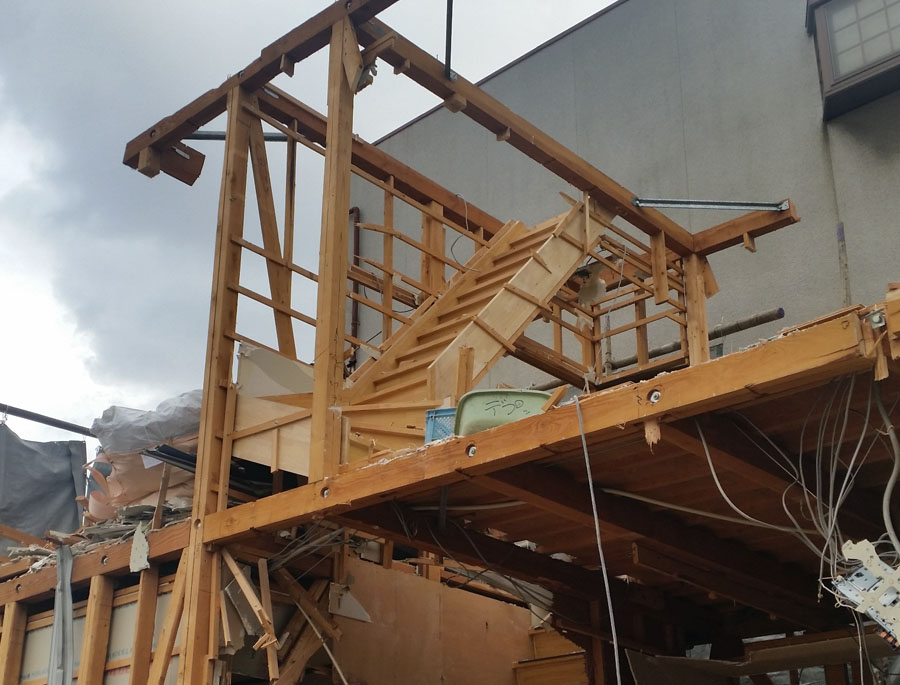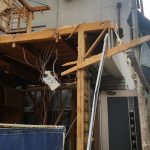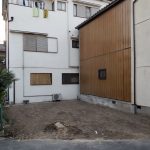Today, I’m going to talk about a peculiar habit that the Japanese have adopted regarding buying oneself a house. If you are from America or Europe, and plan to buy or have already bought a house, you might have – at best – redecorated it and fixed a few things here and there. In no way would you have had the idea to simply take the house down to have a brand new one built in stead, right? Riiight… well… not in Japan.In our common western sense, a house usually keeps its original value, or even gains some through time (assuming no crazy company comes and decides to build their nuclear plant, chemicals factory or dump yard nearby, in which case your house would be worth peanuts). Rarely does a house lose its value, unless it deteriorated in such a way that there is nothing to salvage. Put it simply, to us, a house is an investment, and many – like me – would rather make a loan than pay a rent (especially if you pay monthly the same amount but end up owning your land and shelter). That’s common sense, dare I say.
In Japan, it is common to buy a house, destroy it – including the foundations – and build a new one. There are several reasons to that, and I’ll make it simple:
1) The building standards against earthquakes
Most of the Japanese houses are still made of wood (for their structure) and are placed on concrete foundations, but there have been “design” improvements as well as the use of reinforcements (special metal brackets in corners and all). But even with that, recent houses withstanding without damage a real big earthquake is still open to debate. I’ll talk about that another time.
2) Most of the Japanese love what is brand new
About that, I can’t say anything as I’m not the materialistic type. I simply do not understand (and I don’t give a damn, so I won’t be judgmental), so I let you think about it and teach me. Also, in the Japanese mind, a house lifespan is not more than 30-40 years, it’s rather a consumable than an investment (even though it’s extremely expensive for what one gets).
3) Real insulation
(about that point, the Japanese don’t seem to mind much – all the people I’ve talk to about that matter don’t seem to have any knowledge regarding that matter)
Just get inside an “outdated” Japanese house either in summer or winter. It will be either freezing (we reached 2°C in a house we used to rent, I still have the photo of the thermometer!) or suffocating. Oh yes, turn on the heater or AC, but don’t turn it off, as everything will quickly leave the room… Nowadays, they use – AT LAST! – glass wool in walls (instead of earth or even nothing – I’m not kidding), but it still is very insufficient because the thickest wool one can find is 10cm, and that’s at best what they’ll put in the walls. What? Did you really believe Japan really was an advanced country? The high-tech stuff you hear and read about is pure bullshit, Japan is late in so many aspects. I’ll write about that too one day…
There may be other reasons, but nothing’s coming up to my mind right now, so let’s leave it at that and see how houses are erased.
Honestly, I had never seen that before coming to Japan, so I don’t know how it goes in other countries. What shocked me, and actually still does, is that EVERYTHING is destroyed (obviously not the appliances nor furniture that got taken care of beforehand). There is no true recycling. What I mean by that is that the house gets taken down as such. Whatever could be used or given away (and I’m sure some people are in need) is ignored, be it bath tubs, sinks, windows (OK, simple glazed, but it still counts), mirrors, etc.
I only noticed that they sort some materials (such as wood and earth, I don’t know about the rest but I bet they sort aluminum and other metals as they can be sold – money money money…). Also, one cannot get rid of waste easily, there aren’t any dump yards, and whatever one wants to throw will come at a price (and that is NOT cheap, mark my word! Those little f…..!!)
I don’t have many photos (I’ll try to add more whenever I get to see some on the streets), but I took a video last week where we can clearly see how the walls are taken down and how they (try to) handle the dust made in the process.
To me, it looks very primitive, I expected something more advanced and safe, but not at all my dear sir. And the trucks are often overloaded (which is illegal, but the Japanese cops… erf… I won’t talk about them, I’m already starting losing my calm), it sometimes reminds me of Vietnam.
Recently a truck was so loaded that when failing maneuvering in a narrow street, it got stuck for 30 minutes and broke some corner tiles of a house. Seriously… (mmmh, makes me wonder if they contacted the owner and had them fixed)
Video uploaded on YouTube (2min26):
https://youtu.be/y3CjCi7Uggg



